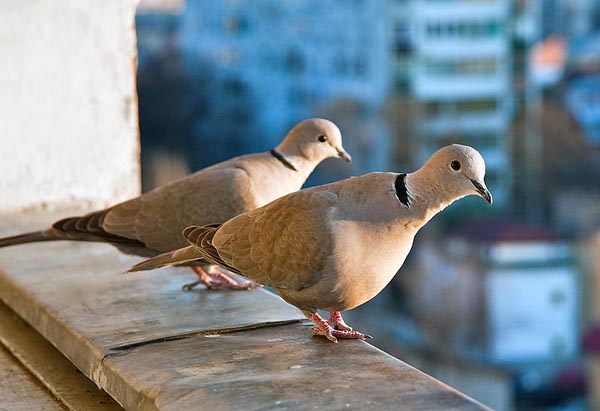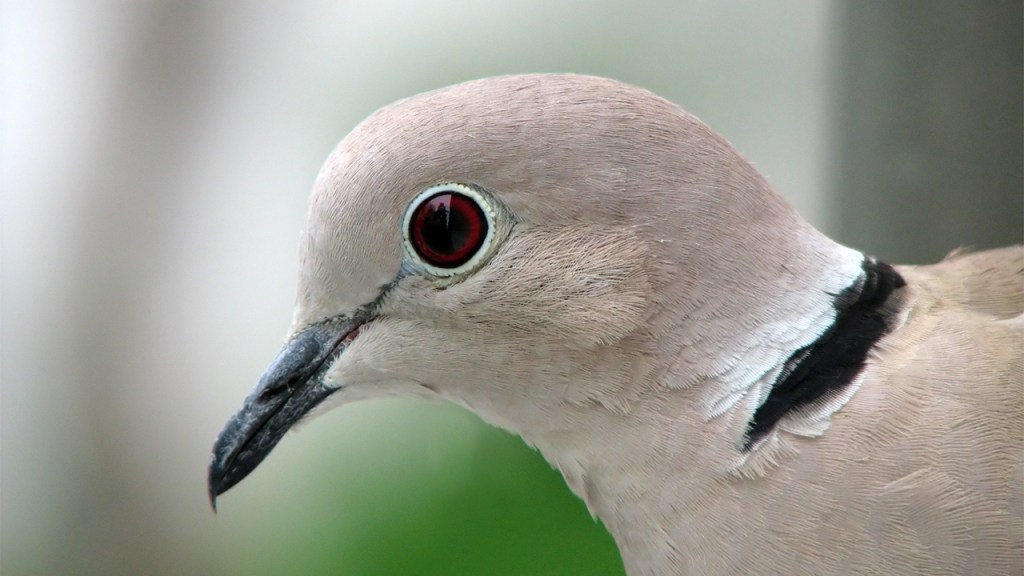The Great Backyard Bird Count (GBBC) — one of the largest citizen science initiatives in the world – annually documents a wide variety of bird population trends.
To my mind, one of the most interesting has been the dramatic spread of the non-native Eurasian collared dove across North America.
The GBBC asks citizen birders to watch an area for at least twenty minutes sometime during a four-day period in mid-February (this year’s count concluded yesterday), and record the birds they see.
Just ten years ago, seeing a Eurasian collared dove would have been a novelty. No more: the doves are now commonly reported by birders in most of the United States.
GBBC data tell the story of this rapid spread.
In the 1970s, the Eurasian collared dove was introduced to the Bahamas. By the early 1980s, the non-native birds made their way to South Florida, where they established populations. Then they began spreading north and west.
Their range appears to have expanded slowly at first. A look at GBBC reports from 1998 show a lot of sightings in Florida, with some birds reported in Texas, Alabama and Arkansas.
By 2001, the doves reached California.
Last year’s bird count results showed the Eurasian collared dove had colonized much of the country. It has not (yet) been reported in New England, but it has reached as far north as Alaska.
The GBBC’s video map dramatically illustrates this expansion.
In my state of Idaho, the doves were first recorded in 2005 by two backyard birders. In subsequent years, the bird was commonly reported in Idaho’s eastern corners. Last year, 132 GBBC participants reported 719 doves throughout the state.
I saw my first Eurasian collared dove in our backyard in 2008 – a banded bird that may have been an escaped pet. Last year, I began seeing the doves hanging around our neighborhood. This year was the first that I noted the species during my own participation in the Great Backyard Bird Count.
What’s going on here? Should conservationists be concerned about this spread?
Unlike some dove species, Eurasian collared doves aren’t migratory. However, they do readily expand into new suitable habitat. In fact, in their native Asia, Eurasian collared doves have been rapidly expanding their range as well – colonizing new countries every year.
The dove is one of those species that adapts well to humanity. The trees, power lines and bird feeders of suburbia provide perfect habitat. The Eurasian collared dove is almost always seen near homes and farms, not unbroken forest or prairie.
Research indicates it is not adversely affecting native mourning doves or other birds. It may simply be filling a new habitat niche created by suburban habitat. But it is still early in the spread.
Could Eurasian collared doves become an invasive threat? That remains to be seen.
Citizen science projects like the GBBC and another citizen initiative, Project FeederWatch, will help scientists continue to track the spread and impacts of the species. It will be interesting to learn what this year’s count found about Eurasian collared doves. If past years are any indication, their populations will likely have grown and spread into new areas of the country.
Have you seen Eurasian collared doves in your area? Have you noted other trends during your backyard bird counts? Let us know what you’re seeing!





Hello, I know this is an older post, but I have a large flock Eurasian Doves in my backyard. Males and females of all sizes. I’ve had watched on two occasions, two males fighting. I heard the mating , the “laugh” of the mating birds. My yard has also been the location of small Eurasian Doves coming out from their nest. It has been very exciting. Western Washington
I saw one yesterday in my yard in Oregon.
We’ve seen 2 pairs. One pair spotted for the first time in the Admirals St./Craigflower area of Victoria, BC. Today we saw a pair in the Holland Avenue area of Cobble Hill, BC.
We just had two of these doves show up on our front porch. I am not feeding them. They seem rather skiddish. My concern is for our quail population. Should I be concerned about this?
Hi Shirley, Eurasian collared doves will chase off other birds, so it’s worth keeping an eye on them. However, according to the Cornell All About Birds page on them “studies on interactions between collared-doves and other species have not yet shown a negative impact on populations of native birds.” https://www.allaboutbirds.org/guide/Eurasian_Collared-Dove/lifehistory
I saw one in my neighborhood on a street light here in Chino, California (southern) the other day. Mourning doves are the norm around here and I’ll be watching for more.
Saw a lone male ECD in my backyard a month ago. He was doing his best to find a mate, cooing constantly. Well it worked and now they are nest building in my front yard tree. I was excited at first as I’ve never seen them here, (Long Beach, CA). Not so excited after reading the article and comments, as I have King birds, Northern Mockingbirds, Scrub Jays, Mourning doves, Juncos, Phoebes, Yellow Rumped Warblers and a variety of finches, all regulars at my feeders. I don’t want to lose my wonderful, varied bunch of birds.
I live on the north Oregon coast near Manzanita and for the past several days 3 of these doves have been in the area. They wake me in the morning with that distinct call I remember as a child in So . California . But there it was the Morning Dove who is smaller than these birds.. It is good to see that they have made it to our area even though it may just be a short visit.
Carol Jones
I have seen an increase on Trinity lake in Trinity county calif. And I believe a decrease in native doves and pigeons. I have not seen any Eurasian doves in del Norte county cal. 3/31/17.
Been seeing them here for the last 3-4 years. SE AZ, rural Cochise County
99% sure I saw a pair on power wires in downtown Berkeley, CA the other day. Looked like overgrown mourning doves, longer than nearby pigeons.
These doves have returned to our yard and surrounding trees or telephone wires for at least 3 years.
There seems to be only two of them
I’ve seen these around my home, seem tame. I didn’t know if they were doves or pigeons – till now.
I live near Yosemite Natl Park, but at about 2k elevation, in Ahwahnee, CA.
We have always seen about seven of these doves every day in our front yard on bird feeders lthought they were ring necks my grandson said no they’re Eurasian doves. We live in Napa Ca
yes many they have driven out the morning dove
A pair has been hanging around a seed feeder in my yard – Meridian, Idaho